The Genovese, Gambino, Lucchese, Colombo, and Bonanno crime organizations make up the Five Families of New York City's Italian-American Mafia, and though their power peaked in the mid-20th century, their blood-soaked saga continues to this day.
For 50 years between 1931 and the 1980s, the Five Families of the Italian-American Mafia essentially ran New York City. From bootlegging during Prohibition to drug trafficking to seizing control of the garment, construction, and trucking industries, the organized crime groups led rackets that brought in hundreds of millions of dollars each year, and for a time, they seemed unstoppable.
While countless other gangs terrorized cities across the United States, New York’s Five Families were the most powerful. They were first recognized in 1931 when the bloody Castellammarese War came to an end and mobsters like Salvatore Maranzano and Lucky Luciano wanted to bring more structure to the New York Mafia. Maranzano organized the city’s Italian-American gangs into the original families: Maranzano, Profaci, Mangano, Luciano, and Gagliano. Then, Luciano established the Commission, giving the boss of each family — as well as the heads of the Chicago Outfit and the Buffalo Mafia — the power to oversee Mafia activity and mediate disputes between groups.
Over time, as leadership of the families changed, so did their names. Today, they’re known as the Bonanno, Colombo, Gambino, Genovese, and Lucchese families. However, for decades, nobody knew about this structure. Their existence was kept secret until 1963 when Genovese mobster Joseph Valachi publicly disclosed the existence of the Five Families during a U.S. Senate hearing.
Still, this public knowledge did little to hinder the New York Mafia. Even today, the Five Families are still around — though they don’t quite rule with the same iron fist they once used to.
The Genovese Family, The Oldest And Largest Of The Five Families
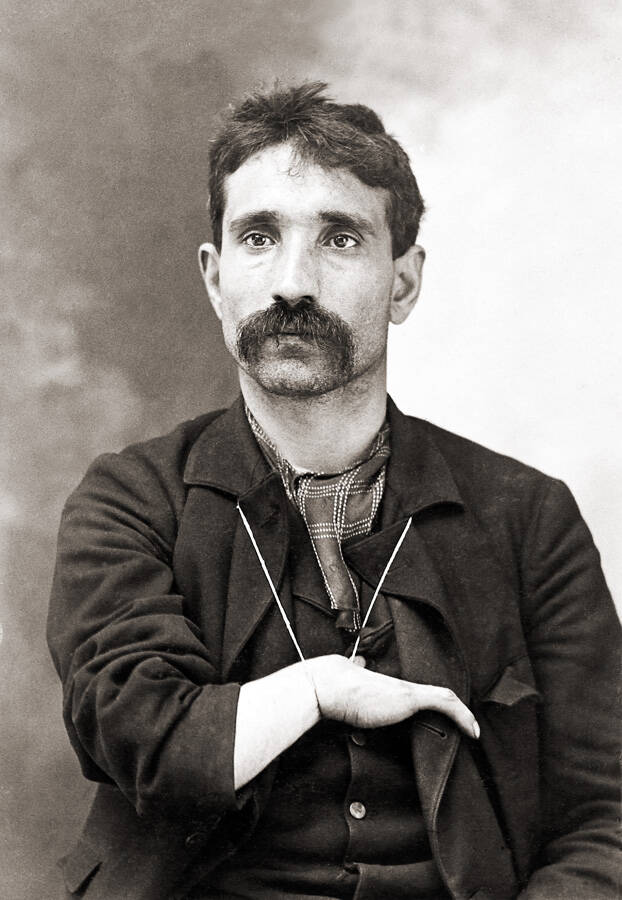
Public DomainGiuseppe Morello, the first boss of the Morello gang, which eventually became the Genovese crime family.
The Five Families were around long before they officially became the “Five Families,” but to start at the technical beginning, it all originated with the Genovese family and its boss, Charles “Lucky” Luciano. Back then, it was known as the Luciano crime family, with Luciano serving as the first official boss. The family originated from East Harlem’s Morello gang, which is commonly recognized as the very first Mafia family in New York City.
The Morello gang started with Giuseppe Morello in the early 1890s after he arrived in New York from Sicily. He and his family, who joined him in the U.S. in 1893, quickly took over East Harlem, the Bronx, and parts of Manhattan. Morello became a strong ally to Ignazio “the Wolf” Lupo, who operated out of Little Italy — and Lupo eventually married Morello’s half-sister, binding their gangs further. They mainly dealt in counterfeiting, extortion, and, of course, murder.
However, by the mid-1910s, their total control was under threat of being usurped by the rival Brooklyn Camorra organization, two gangs run by Pellegrino Morano and Alessandro Vollero that were made up of Italian immigrants from Naples. The Camorras mostly dealt in drugs, gambling, and prostitution, so the two groups stayed out of each other’s way at first, but that changed when Giosue Gallucci, the “King of Little Italy,” was murdered in 1915. Then, the Morello gang and the Camorras began fighting for control of his gambling rackets.
The result of this conflict is known as the Mafia-Camorra War. The fighting went on for months before Morano offered a truce in September 1916 — only for it to be a trap.
Nicholas Terranova, Giuseppe Morello’s half-brother who had taken over the Morello gang when Morello and Lupo went to prison for counterfeiting in 1910, was ambushed and killed by Camorra members when he arrived at a restaurant to talk about the terms for the truce. Pellegrino Morano was charged with Terranova’s murder the following year, and as more Camorra members were sent to prison, the gang fell apart, bringing an end to the war in favor of the Morellos.
Then, as Prohibition went into effect in the 1920s, the Morellos pivoted their business dealings to focus on bootlegging. Around the same time, Giuseppe “Joe” Masseria and Rocco Valenti began vying for control of the Morello gang.
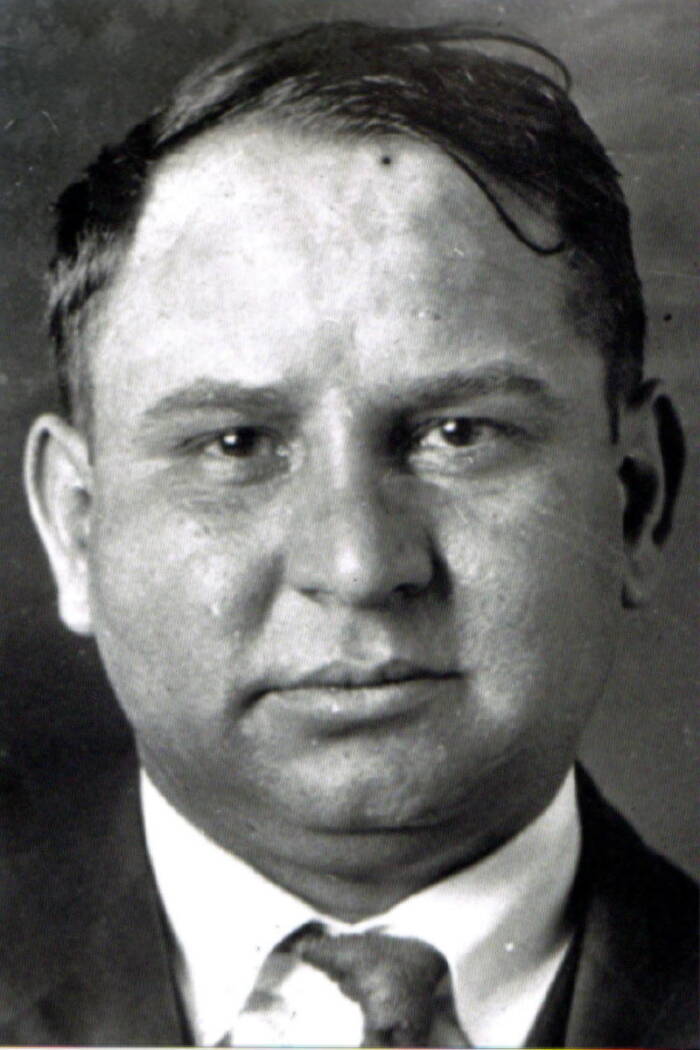
Public DomainGiuseppe “Joe” Masseria ran what’s now the Genovese family from 1922 to 1931.
After a string of hits, Masseria’s men murdered Valenti, calling the competition in his favor and setting him up as the new boss of the Morello family. Masseria expanded the gang’s bootlegging, extortion, loansharking, and gambling operations and brought in fresh faces to work under him, including Lucky Luciano, Frank Costello, Vito Genovese, Joey Adonis, and Albert Anastasia.
However, as always, there was ongoing conflict and tension between organized crime groups in the city. Masseria’s biggest rival was Salvatore Maranzano, who ran the Castellammarese clan (which eventually became the Bonanno crime family). This unrest continued to simmer throughout the 1920s until it escalated into the Castellammarese War — a war that Masseria was almost certainly going to lose. Seeing an opportunity to seize power for himself, Lucky Luciano struck a deal with Maranzano to take Masseria out and become Maranzano’s right-hand man.
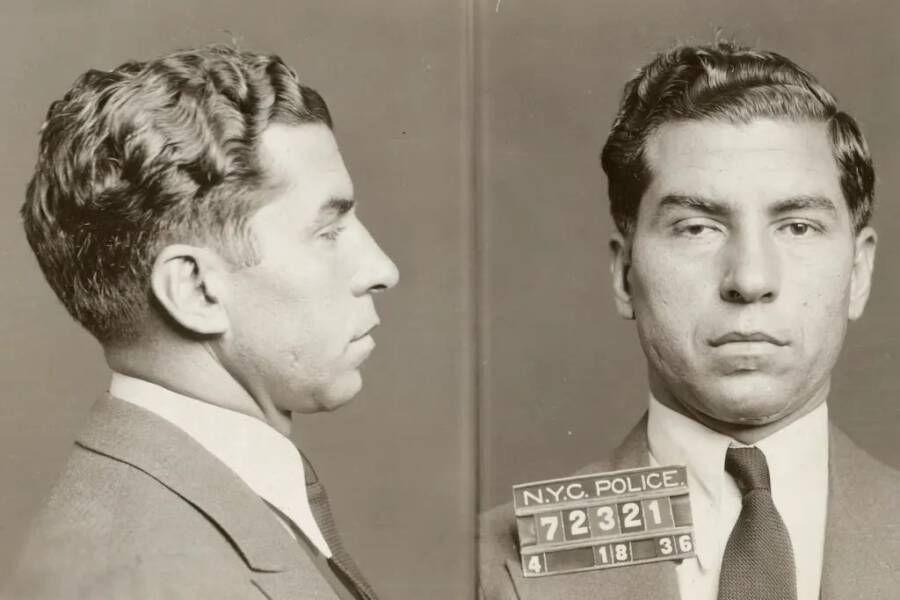
Public DomainCharles “Lucky” Luciano established the Commission, which was made up of the bosses of each of the Five Families of the New York Mafia and several other mob leaders across the U.S.
Masseria found out about the plan and tried to have Luciano killed first, but Luciano was warned ahead of time. Then, on April 15, 1931, during a game of cards at a restaurant on Coney Island, Luciano excused himself to the restroom just before four gunmen — Albert Anastasia, Vito Genovese, Joey Adonis, and Benjamin “Bugsy” Siegel — burst into the room and shot Masseria dead. Luciano then took over Masseria’s gang.
Not wanting to become embroiled in any more inter-gang conflicts, Maranzano called for a meeting of crime bosses from the most powerful families, declaring himself the capo di tutti i capi, or “boss of all bosses,” and reorganizing the factions into the Five Families. The Five Families were headed by Lucky Luciano, Giuseppe “Joe” Profaci, Tommy Gagliano, Vincent Mangano, and Maranzano himself. However, as the “boss of all bosses,” Maranzano prioritized his own rackets — and Luciano recognized that his new boss was just as greedy and power-hungry as his last one.
Maranzano was no fool. He knew that Luciano posed a threat and asked Irish gangster Vincent “Mad Dog” Coll to take Luciano out. Luciano, once again, was warned of the threat on his life, so he decided to make the first move. When Maranzano called Luciano to his office in September 1931, Luciano instead recruited four Jewish gangsters with the help of Bugsy Siegel and Meyer Lansky. The four men disguised themselves as government agents, made their way into Maranzano’s office, and killed him.
Luciano emerged as the top dog of the New York Mafia, but wary of claiming himself as the “boss of all bosses,” he proposed a new strategy. He established the Commission, a governing body for organized crime that would help settle territorial disputes and prevent gang wars. It also helped Luciano stay in power without looking like he was hungry for it. The initial “board of directors” was made up of the bosses of the Five Families, Chicago Outfit leader Al Capone, and Buffalo Mafia head Stefano Magaddino.
A few years later, in 1935, Luciano caught wind that New York mobster Dutch Schultz was planning to murder a prosecutor named Thomas E. Dewey, who would later become the governor of New York. Fearing that such a public murder would cause unwanted attention and have investigators come knocking at their doors, the Commission met to discuss the matter. They decided to take Schultz out before he could get to Dewey. Schultz was killed in a restaurant in October 1935, and Dewey was saved.
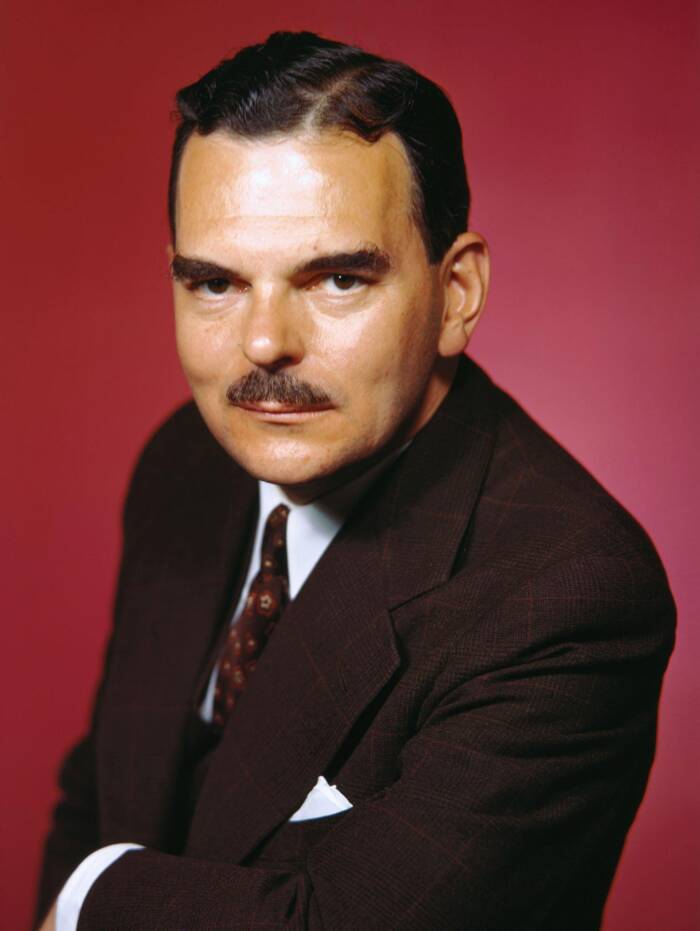
Public DomainThomas E. Dewey, the future governor of New York who worked to prosecute members of the New York Mafia.
While Schultz’s murder may have kept attention off the mob, the decision inadvertently came back to haunt Luciano, as Dewey prosecuted a case against Luciano for running a prostitution ring in May 1936. In June of that year, Luciano was convicted on 62 counts of compulsory prostitution and sentenced to 50 years in prison. He wouldn’t serve his full sentence, though, because he struck a deal with federal agents during World War II to provide information on how to prevent enemy sabotage. The end result was Luciano being released from prison in 1946 and deported to Italy, where he lived until his death in 1962.
While Luciano was in prison, Frank Costello oversaw the family, and he became the official boss after Luciano was deported. During his rule, he made an enemy out of Vito Genovese by demoting him from underboss to caporegime. So, when Genovese was acquitted of a murder charge that had forced him to flee to Italy for several years, he began making moves to take Costello out.
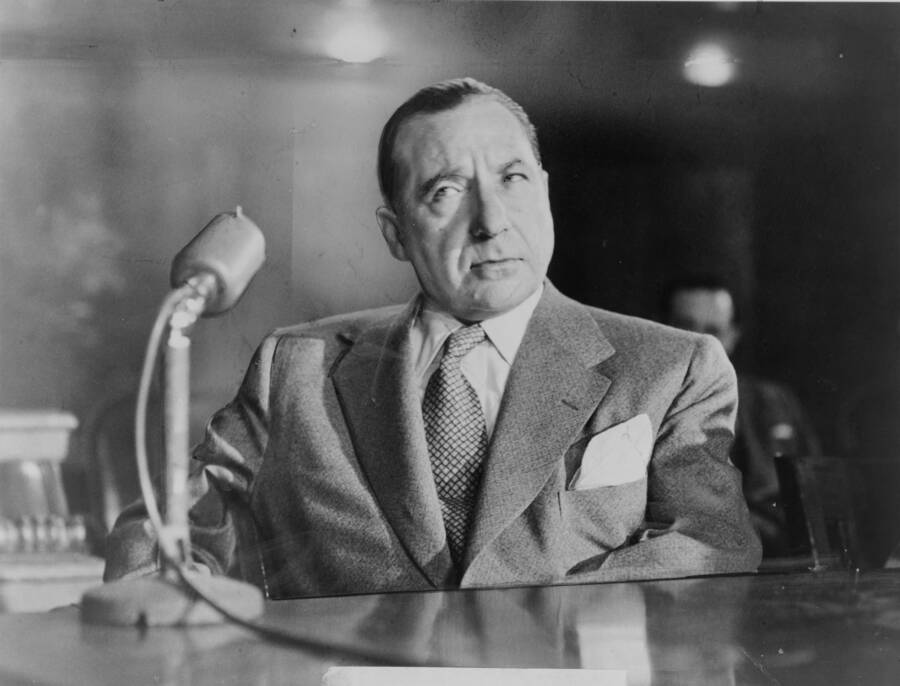
Public DomainFrank Costello testifying at the Kefauver hearings, which aimed (and failed) to prove there was a vast Sicilian-Italian organized crime group operating within the U.S.
The day came in May 1957 when fellow family member Vincent “the Chin” Gigante shot Costello in the streets. Unfortunately for Genovese, Gigante’s shot missed its mark, and Costello emerged with just a flesh wound. Around the same time, Mangano family boss Albert Anastasia was gunned down in a barber shop, allowing Carlo Gambino to take over. Costello, fearing his days were numbered, gave up control to Vito Genovese — and the family took on its new boss’s name.
Genovese eventually became the most powerful mobster in New York — until he was sentenced to 15 years in prison in 1959. That same year, Genovese soldier Joe Valachi was indicted and sentenced to 15 years behind bars as well, but he turned on his fellow Mafiosos and became an informant, confirming for the first time publicly that the Italian-American Mafia in New York City was indeed real.
Philip “Benny Squint” Lombardo, Vincent “the Chin” Gigante, and Liborio “Barney” Bellomo, respectively, have ruled over the Genovese family since Vito Genovese’s death in 1969, alongside various acting bosses.





